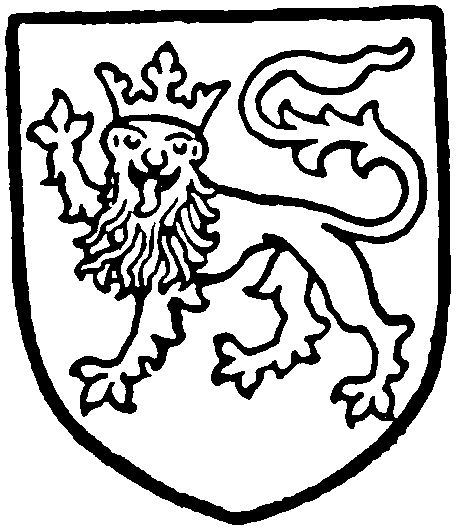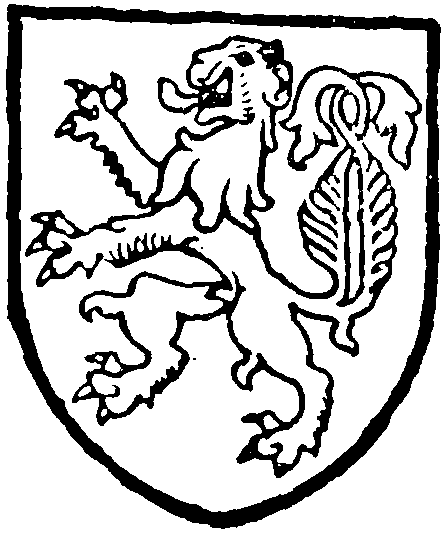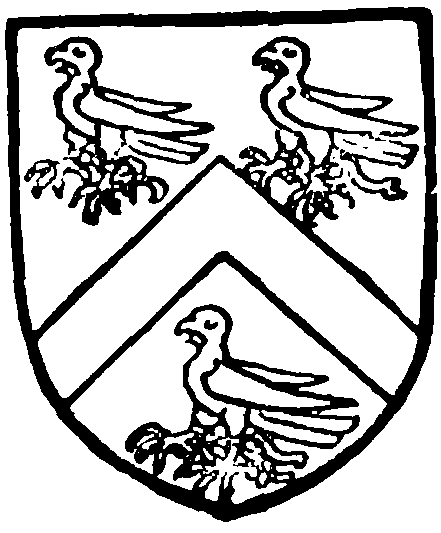A History of the County of Hampshire: Volume 5. Originally published by Victoria County History, London, 1912.
This free content was digitised by double rekeying. All rights reserved.
'Parishes: Gatcombe', in A History of the County of Hampshire: Volume 5, (London, 1912) pp. 246-249. British History Online https://www.british-history.ac.uk/vch/hants/vol5/pp246-249 [accessed 19 April 2024]
In this section
GATCOMBE
Gatecome (xi cent.); Gatecumb, Gadecombe (xiii cent.); Yatcombe (xvii cent.).
Gatcombe is one of the central parishes of the Island, inclosing a picturesque wooded valley running south into the heart of the downs. Under 3,000 acres, it contains some 400 inhabitants, and the cottages are scattered along the road to Chillerton, some few being grouped near the mill to the west of the church. The soil is loam with a subsoil of chalk and freestone. In 1905 the parish contained 1,300¼ acres of arable land, 1,221¾ acres of permanent grass and 103 acres of woodland. (fn. 1) Gatcombe is united with Chillerton for secular purposes, the two being administered as one parish, and the Gatcombe children attend Chillerton school.
The chief residence is Gatcombe House, the property of Sir Charles Seely, bart., lying on the western slope of the valley sheltered by the woods from the south-west. It was rebuilt by Sir Edward Worsley in 1750. (fn. 2)
Sheat House lies to the south of Gatcombe, at the foot of Chillerton Down, and is of the usual E type of the 16th to 17th century. The entrance was originally to the south, where the walls of a forecourt still remain. The interior has been a good deal cut up by later remodelling, but the old parlour with its oak panelling and fine carved chimney-piece still remains, (fn. 3) the latter having the Urry arms in a central panel.
In 1882 Whitcombe was transferred from Gatcombe to Carisbrooke, (fn. 4) and in 1894. Gatcombe was extended to include parts of the parishes of Carisbrooke and Wootton. (fn. 5)
The following are place-names: — Cleyhull, Ouges-doune, les Berghes, Everlond, la Fisacres, Vytelhull, Bretecombe (xiv cent.). (fn. 6)
MANOR
Before the Conquest GATCOMBE was held of Edward the Confessor in parage by three brothers, but in 1086 it had passed to William son of Stur. (fn. 7)
The overlordship was annexed to Carisbrooke Castle (q.v.) until it lapsed in the 17th century. (fn. 8) The lands of William son of Stur passed to his son Hugh, who was called Hugh de Lisle, (fn. 9) and probably afterwards passed to Baldwin son of Stur, (fn. 10) or de Estur, and after him to William de Estur (called de Insula). (fn. 11) The latter had a son William, (fn. 12) who probably succeeded him in Gatcombe and left it to Baldwin de Estur, possibly his son. Baldwin died c. 1224, leaving an infant daughter Maud, (fn. 13) who is said to have married Baldwin or Walter de Lisle. (fn. 14) However, she evidently kept the surname of Estur, (fn. 15) which was also assumed by her eldest son William. In 1263 as Lady Maud de Gatcombe she was holding this manor and other property in the Isle of Wight by the service of guarding the Island when necessary and by suit at the court of Carisbrooke Castle, called 'knighten' court. (fn. 16) She settled Gatcombe on her eldest son William de Estur, (fn. 17) afterwards knight, but he died childless in 1291–2, leaving it to his brother Geoffrey de Lisle. (fn. 18) Geoffrey was succeeded in 1293 by his son Baldwin, (fn. 19) who died in 1307, leaving a son John, then only four years old. (fn. 20) The custody of his lands was granted to Robert de Hanstede the younger, (fn. 21) who in the same year complained that Ralph de Gorges and others had entered the manor of Gatcombe, 'wrecked the doors of the houses' and taken away hay and other goods. (fn. 22) In 1308 the king, at the instance of Robert de Hanstede, granted free warren in Gatcombe, Calbourne and Whitwell to John Lisle, (fn. 23) but in the following year Gatcombe and Calbourne were taken into the king's hands 'for the default' that Robert de Hanstede had made. (fn. 24) John Lisle died in 1337, leaving a son John, who was under age, (fn. 25) and whose marriage, with the custody of his lands, was granted to the Archbishop of Canterbury. (fn. 26) The last named John died in 1349 and was succeeded by his son John, a minor. (fn. 27) One third of the manor was assigned to his widow Joan in dower, (fn. 28) and in the following year the custody of the remaining two thirds was granted to her and to her father John de Bohun of Midhurst. (fn. 29) John Lisle died childless in 1369, leaving as heir his sister Elizabeth, wife of John Bramshott. (fn. 30) He seems, however, to have also left a brother Leonard or Laurence, whose son Thomas, a minor, was holding part of the manor in 1390. (fn. 31) He came of age in 1394 (fn. 32) and was still alive in 1398, (fn. 33) but had been succeeded before 1428 by John Lisle, probably his son. The latter, who, with William Bramshott, (fn. 34) was holding three fees in Gatcombe, Whitwell and Calbourne in 1428, (fn. 35) left three daughters and coheirs, (fn. 36) but his property in Gatcombe passed to the Bramshotts. William Bramshott died between 1432 (fn. 37) and 1444, for at the latter date his son John settled Gatcombe on his prospective wife Katherine, daughter of Sir John Pelham. (fn. 38) Katherine, who survived her husband and afterwards married Thomas Lewknor, held the manor until her death in 1481, when it was divided between her daughters, Elizabeth wife of John Dudley and Margaret (fn. 39) wife of John Pakenham. (fn. 40)

Estur. Argent a cherry tree with its fruit in its proper colours.

Lisle. Gules a leopard argent with a golden crown.
Elizabeth Dudley died in 1498, and her husband three years later, when her half of the manor passed to her son Edmund Dudley, (fn. 41) the notorious lawyer of the reign of Henry VII, who was attainted in 1510. (fn. 42) His property in Gatcombe had been settled on his wife Elizabeth, daughter of Edward Grey Viscount Lisle, (fn. 43) and she with her second husband Arthur Plantagenet was holding it in 1519. (fn. 44) Elizabeth was living in March 1538, (fn. 45) but John Dudley, her eldest son by Edmund Dudley, had evidently already sold the reversion of the half of the manor to Sir John Ernley, Chief Justice of the Common Pleas, whose son William (fn. 46) made a settlement of this moiety of the manor in 1538. (fn. 47) He died seised of the same in 1546, leaving a son and heir Francis, a minor. (fn. 48) The latter evidently died childless, and was succeeded by his brother Richard, (fn. 49) who sold his half of the manor to John Worsley about 1576. (fn. 50)

Dudley. Or a lion vert with a forked tail.
The other half of the manor passed from John Pakenham and Margaret to their son Edmund, (fn. 51) and from him to his daughter Constance wife of Sir Geoffrey Pole and another daughter wife of Richard Ernley. (fn. 52) Constance with her eldest son Arthur sold her moiety in 1561 to John and Thomas Tawke, (fn. 53) from whom it was purchased with the Ernley moiety (fn. 54) by the above John Worsley in 1566. (fn. 55)
The latter, who thus owned the whole manor, died in 1580, having previously settled Gatcombe on his younger son Richard. (fn. 56) However, the latter died childless and was succeeded by his elder brother Thomas Worsley, who by his will dated 12 May 1601 left Gatcombe to his younger son John. (fn. 57) The latter was involved in a quarrel with some of the other parishioners of Gatcombe about the repair of the parish church, which was in such a ruinous condition that it was 'ready to fall,' and the minister in 'strong weather' had to 'read the service in his seat.' John Worsley being 'a litigious man and potent in estate' was accused by the churchwardens in 1637–8 of refusing to pay the rate levied for restoring the church and of taking for his own use a house and garden belonging to the same. (fn. 58) In 1640, however, he was one of the churchwardens chosen by the Archdeacon of Winchester to see that the church was restored, and although this appointment was opposed by the former churchwardens as illegal, the rector of the parish sent a petition to Archbishop Laud asking that 'Mr. Worsley and John Blake may go on in so pious a work.' (fn. 59) Sir Edward Worsley, son of John, was a noted Royalist and is said to have joined in an attempt to rescue the king from Carisbrooke Castle. (fn. 60) His estates were not sequestered, but in 1651 he asked to be allowed to compound, and paid a fine of only £3 6s. 8d. (fn. 61) The manor continued in his family until the end of the 18th century, when his great-great-grandson Edward Meux Worsley died without issue male. (fn. 62) It was then divided between the two daughters of the latter, Elizabeth, who married Edmund John Glynn, (fn. 63) and Jane, who married Colonel Alexander Campbell. (fn. 64) In 1805–6 the whole manor was in the possession of Colonel Campbell and his wife, (fn. 65) who were still holding it in 1843. (fn. 66) It was afterwards sold to Alexander Baring first Lord Ashburnham, from whom it was purchased in 1873 by Charles Seely, father of Sir Charles Seely, bart., the present lord of the manor.

Worsley. Argent a cheveron between three falcons sable having beaks, legs and bells or.
A mill worth 40d. in 1086 (fn. 67) probably belonged to the manor of Gatcombe until the 16th century. (fn. 68) In 1291 there were two mills worth 20s., while in 1561 there were five mills in Gatcombe and Whitwell.
In the 14th century the lord of the manor had fish ponds in Gatcombe and fishing rights in the Pidford. (fn. 69)
A messuage in WHITCOMBE, parcel of the manor of Gatcombe, passed into the Pole moiety of the manor on the death of Edmund Pakenham. It passed with Gatcombe to the Worsleys, was settled by John Worsley on his second son, David, in 1717, and was bought in 1825 by the Rev. William Hughes, whose son in 1879 sold to Charles Seely. (fn. 70) Whitcombe, divided into Great and Little Whitcombe, was transferred to the parish of Carisbrooke in 1882.
SHEAT was the name of three places in the Isle of Wight, situated respectively in Gatcombe, Carisbrooke and Brighstone. Sheat in Gatcombe was perhaps represented in 1086 by the 1 hide in 'Essuete' held by Alvric as he had held it in the time of Edward the Confessor, and by the half hide of land in 'Soete' which belonged to the Saxon tenants Ulnod and Bruning. (fn. 71) It seems to have afterwards come into the possession of the lords of Gatcombe, who claimed manorial rights there within recent times. (fn. 72) Land in Sheat was sold in the 16th century to the Urrys, (fn. 73) one of whom built the so-called manor-house, and it continued in their possession until purchased in 1873 by Charles Seely, father of the present owner, Sir Charles Seely.
CHURCH
The church of ST. OLAVE lies in a leafy hollow, just to the north of Gatcombe House, and was built in the 13th century by one of the Esturs as a manorial chapel. It comprises an aisleless nave and chancel and a western tower, and, with the exception of the latter feature, remains much as it was originally built. Late in the 15th century transomed windows were inserted in the north and south walls and a tower erected at the west end. In 1864 the chancel was pulled down and rebuilt of a greater length, when buttresses were added on either side of the lancet window.
The tower was in all likelihood built by the same masons who erected that at Carisbrooke. It has angle buttresses from which the corner finials spring and is banded together at the top by a string enriched with grotesque carvings. Angels with shields support the finials on the cardinal faces of the tower. There has been a start to groin the roof of the ground stage, but it has evidently been abandoned and only the springers remain from which the brackets supporting the floor of the ringing stage start. The shafted responds of the chancel arch (13th century) start in a curious manner from a stone plinth without bases, and in the south wall is the only remaining original lancet window.
In the 15th-century south windows the original glass still remains in part, the angel figures (fn. 74) in the upper lights being practically perfect. There is an interesting 13th-century font with octagonal shaft and bowl on the faces of which are slightly sunk arched panels. (fn. 75)
In the chancel north wall is a sepulchral arched recess containing a rough wooden effigy (fn. 76) of a recumbent mailed figure bearing a shield. (fn. 77)
There are three bells, inscribed: (i) 'Mathias. Goldsmith. Rector. Richard. Young. Churchwarden; Clement. Tosiear. cast. mee. in. the. yea. of. 1700.' (ii)'God. be. our. Guyd. R.B. 1605.' (iii) 'Benedictum sit ✠ nomen Dni.'
There is a fine silver drinking-cup c. 1540 used as a chalice. (fn. 78) The cover is of the reign of Elizabeth and was probably made at the time the cup was presented.
There is a good Jacobean altar table with the text 'Prayse. ye. the. Lord' cut on the front panel, and the upper part of the tower screen is formed from the old 16th-century oak communion rails (fn. 79) with their legend 'I will wash my hands in innocency so will I cumpass thine altar Lord. Create in me a clean heart O God and renew a right spirit within me.'
The registers date from 1560 and contain many interesting entries.
ADVOWSON
The advowson of the church of Gatcombe followed the same descent as the manor until 1821, (fn. 80) when it was sold to the University of Oxford according to the terms of the will of Dr. George Holme, rector of Headley, near Liphook, who in 1763 bequeathed £1,000 in trust for the purchase of a living as an increase to the income of the principal of St. Edmund Hall, (fn. 81) who is now patron.
At the beginning of the reign of Queen Mary Lambert Peche, rector of Gatcombe, being married, was obliged to resign the living. A certain Morris Clinock was appointed in his place and let the parsonage to William Cuffold, who refused to give it up when Peche was restored on the death of Queen Mary and 'suffered the Chauncell of the same Church to fall to the grounde for lack of Repayringe of the same.' (fn. 82)
CHARITIES
The Worsley Educational Charity is regulated by a scheme of the Charity Commissioners, 6 September 1892, and formerly consisted of an annuity of £8 issuing out of an estate in the parish of Arreton, presumably settled upon the school by Sir Edward Worsley, kt. The annuity was redeemed in 1875 by the transfer of £267 consols to the official trustees, which with accumulations eventually reached £366 5s. 1d. consols. The sum of £118 19s. 2d. stock was sold out and the proceeds applied towards the erection of a Sunday school, leaving a balance of £247 5s. 11d. consols with the official trustees, producing £6 3s. 4d. yearly, of which £1 12s. constitutes under the scheme 'The Religious Branch' and £4 11s. 4d. 'The Secular Branch.'
The parish half acre consists of a piece of land called North Field, which has been in the possession of the parish from time immemorial.
